As one of your three contact points with the bike, your choice of handlebars can make a sizable difference to how your gravel bike rides.
Yet with so many options on offer in terms of width, shape and materials, how should you choose?
We’re here to help you select your ideal bar from the rapidly growing number of gravel handlebars on the market.
5 key things every rider needs to know about gravel bike handlebars
- Wider is (usually) better off-road: Gravel bars are typically wider than road bars for increased control on rough terrain and more space for bikepacking bags
- Flared drops boost stability: Flared handlebars – wider in the drops than at the hoods – can help improve stability when descending or riding technical trails
- Shape matters: Gravel bars come in varied shapes, including ergonomic and alternative designs (like the Canyon Grail or Jones H-Bar) to suit comfort, control, and packing needs
- Material trade-offs: Alloy bars are durable and affordable, while carbon bars offer more vibration damping but at a higher price and with added fragility
- Accessory compatibility is key: Consider space and mounting options for lights, GPS units, bells, and dropper levers when choosing your handlebar setup
What handlebars do you need for gravel riding?
Gravel bike handlebar width explained
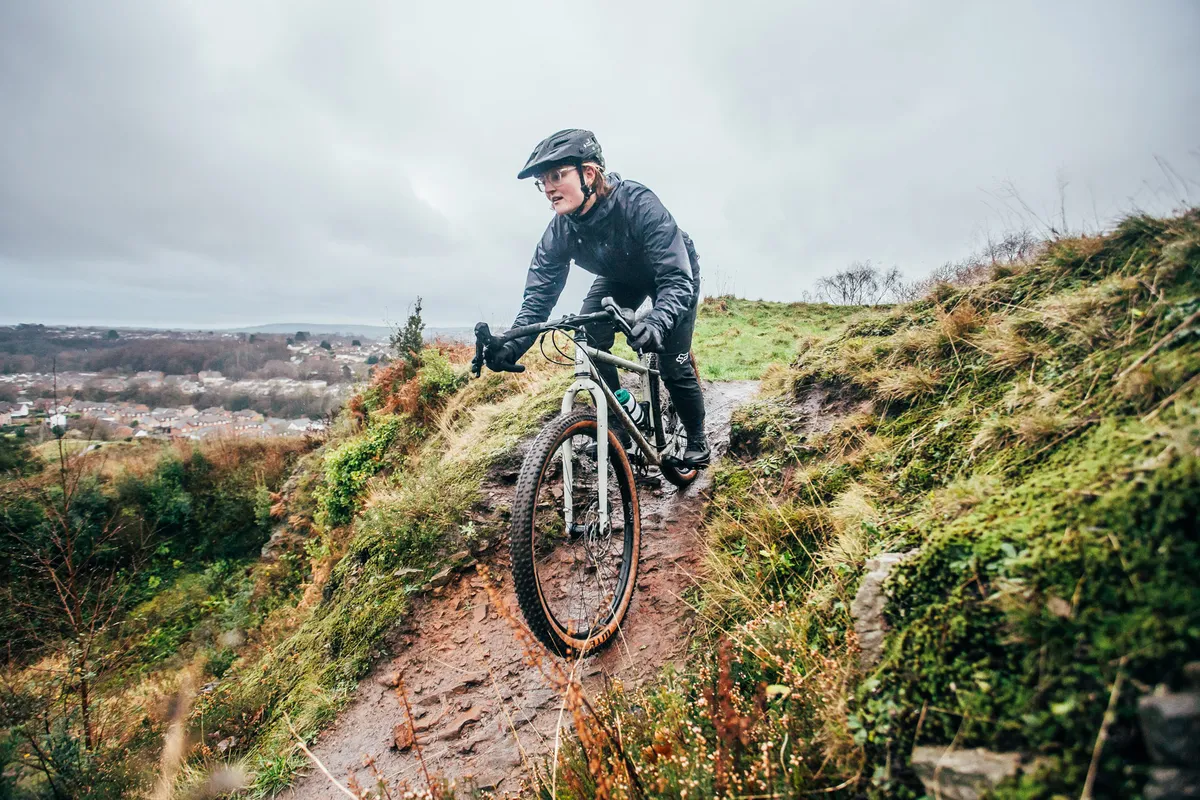
Typically, when choosing road bike handlebars, you’ll select a size proportional to your shoulder width as a starting point.
It's an inexact science, and some riders may prefer a narrower handlebar (and others a wider bar), but it's a good starting point.
However, when road cyclists switch over to try gravel bikes, it's fairly common for them to size up. For example, if you usually ride a 40cm bar on the road, then a 42cm bar on your gravel bike could work well.
This additional width gives a little extra control when riding off-road. Generally speaking, the more technical the riding, the more riders tend to prefer a wider drop bar, with brands such as Curve, Salsa and Ritchey offering handlebars up to a whopping 60cm wide.
Besides giving a better ride over rougher, steeper terrain, these wider bars also provide a lot more space up front for handlebar bags when you’re bikepacking.
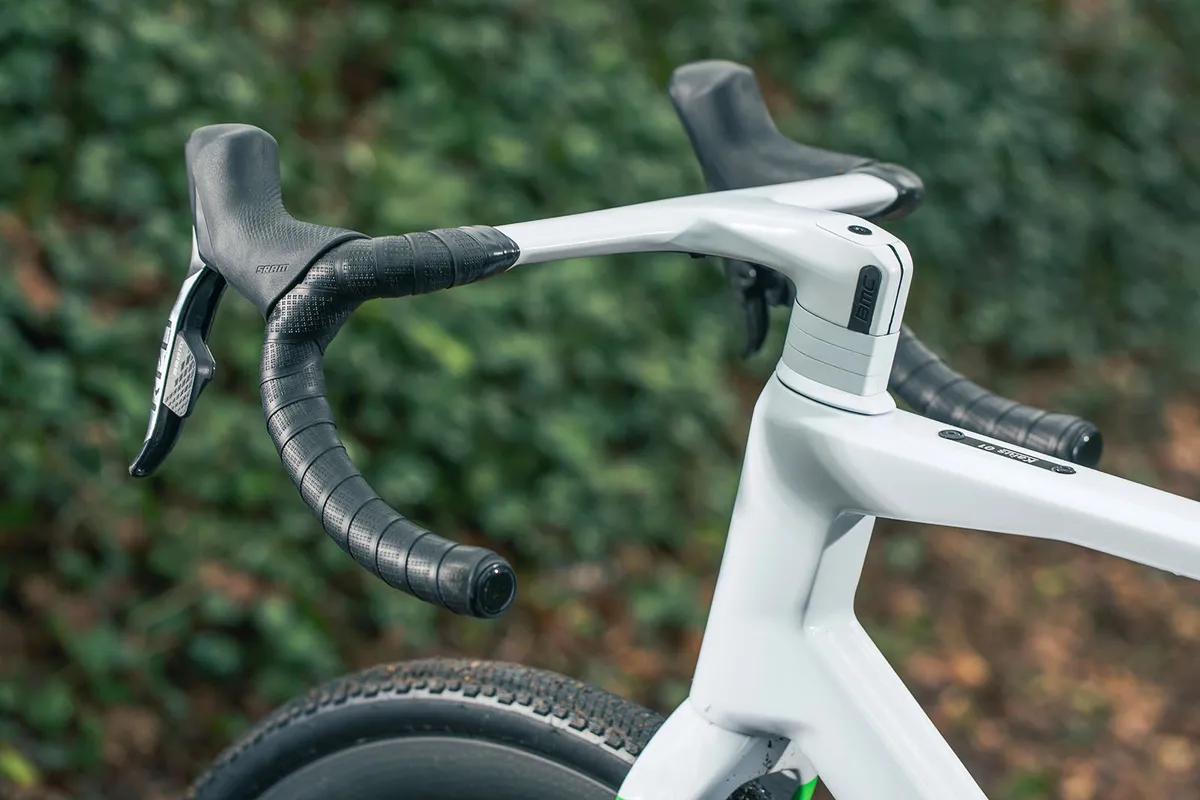
That said, narrower handlebars may be favoured by gravel racers, or those simply prefer the feel of a narrow bar.
Flared gravel bike handlebars

Measuring wider on the drops than at the hoods, flared bars are a popular choice on a typical gravel bike setup.
They give a wider, more stable position in the drops, which comes in handy on rougher terrain and when descending, and also provide a little more space between the drops for luggage.
Flared bars vary in shape and degree of flare, from very subtle angles to the extreme.
For a moderate flare, try starting with an angle of 12 to 16 degrees, such as on the PRO Discover Gravel Bar.
Some more progressive designs will give an altered shifter position as well as wider drops, so it’s best to try before you buy if you can. They’re not for everyone and can negatively affect the ergonomics of shifters.
Gravel bike handlebar shape
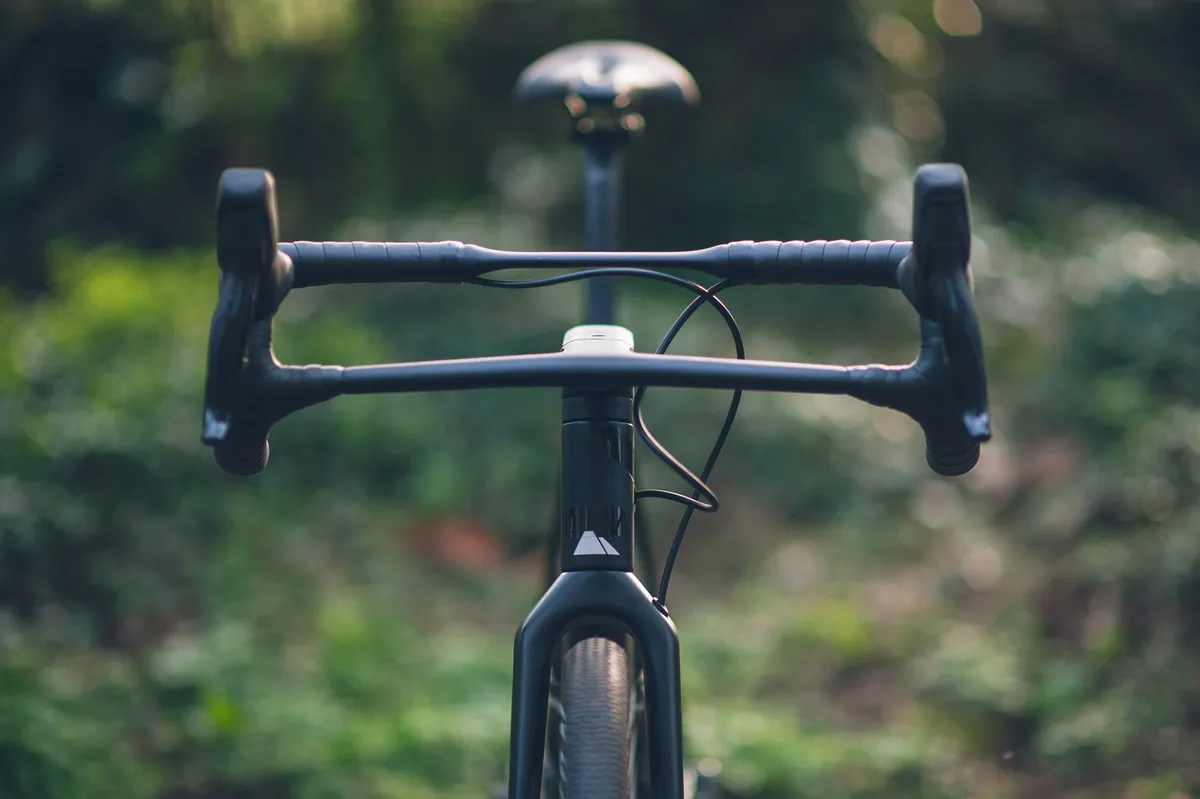
Without the constraints of UCI rules, the gravel world has been free to experiment and trial many different component designs, and handlebar shape is a prime example.
Consider the iconic (but discontinued) Canyon Grail double cockpit, for example.
You’ll find a wide variety of gravel-specific handlebars to choose from, including aero tubing, ergonomic shapes, wide flared drops and swept tops.
Besides drop bars, there’s also a huge range of flat bars to consider for gravel riding, again in many shapes and sizes – more on this below.
WhatBars is a brilliant tool that overlays the top-down profiles of multiple handlebars for comparing their shape and width.
Alternative handlebars for bikepacking

Besides traditional drop bars and flared bars, there are also many different shapes that have become popular for multi-day touring, or bikepacking.
These tend to prioritise comfort, ensuring you can keep pedalling for longer periods without any discomfort to the wrists, shoulders and upper body.
The Jones H-Bar is perhaps the best known, with a highly swept flat bar complemented by a forwards loop for more hand positions, as well as additional bag and light mounting options.
Farr’s Aero Gravel bar is a more recent addition, with a forwards loop integrated to alloy drop bars.
The Surly Corner bar is perhaps the strangest of them all, offering a drop-handlebar design with flat-bar controls.
Alloy or carbon bars for gravel riding?

Most gravel handlebars are made from either aluminium alloy or carbon fibre, and sometimes even titanium – perfect if you ride one of the best titanium gravel bikes.
You’ll find that you have to pay a premium for carbon fibre bars, and the weight savings are not that generous.
It’s worth remembering, though, that carbon bars help to absorb some trail feedback, which can reduce fatigue on longer multi-terrain rides.
You can often get a better-value bar if you opt for an aluminium model, and it will be less likely to become damaged in the event of a crash.
Like many road bikes, some gravel bikes now come with one-piece carbon fibre cockpits.
Fitting accessories on gravel handlebars

Besides being a place for you to control your bike through your brakes and gears, your handlebars provide a cockpit, where you might want to add some additional functionality via gravel bike accessories.
When considering which handlebars are best for you, think about what you might want to attach. Do you need to have a mount for a bike light, or add a bike bell to help alert shared trail users of your approach?

If you’re intending to use a gravel dropper seatpost, how do you plan on actuating this? Will you want a shifting-like functionality – such as that seen on Shimano GRX – or do you need a separate lever mounted to the drops?
Do you plan on attaching a GPS bike computer to your bars, and do you have a mount that's compatible with your bar profile?
Aero-profiled handlebars can make this a little more tricky, so you might need to find a mount that attaches to the stem faceplate, for example.
Should you use clip-on aero bars for gravel riding?
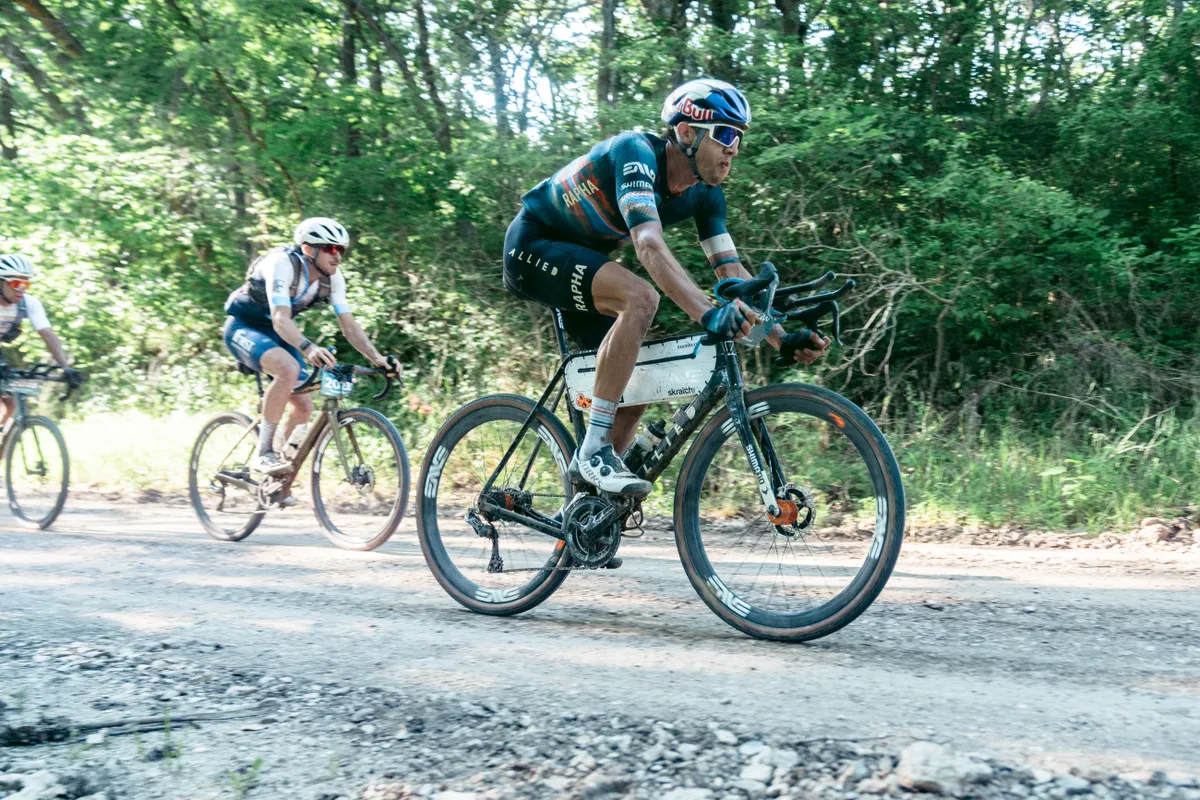
Aero bars can be an attractive accessory to add to your gravel bike. This is because aero bars can offer an aerodynamic advantage over longer, flatter rides, or give more variable hand positions for multi-day bikepacking trips.
Having said this, their use is pretty specialist, and clip-on aero bars do come with drawbacks.
Remember that when you’re on the extensions, you cannot access the brakes, so it’s a risky idea if you’re riding over any technical terrain or with other riders.
Safety concerns have led some race organisers – most notably, Unbound – to ban aero bars altogether from some events.
What handlebar tape is best for gravel riding?
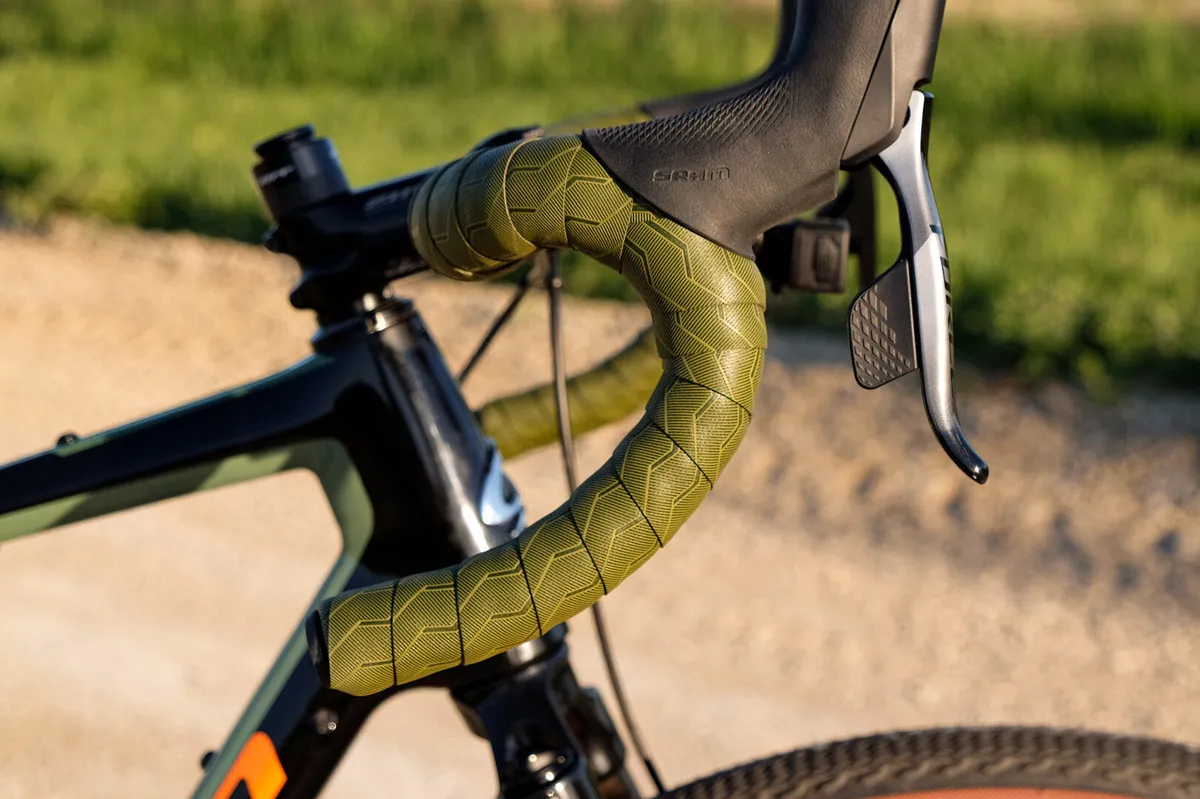
To cope with the rougher terrain associated with gravel riding and increased trail feedback, many gravel riders choose to wrap their handlebars with a thicker, more cushioned bar tape.
For even more thickness and padding, consider gel padding underneath the bar tape.
You’ll need to bear in mind that components on your gravel bike are likely to have a harder life than on the road, with mud, stones, maybe even sand, and all kinds of weather to contend with.
The best handlebar tape for you could be a more robust model to help prolong its life, and you might want to think twice about opting for white…
Editor's note: this article was last updated on 27 May 2025. We added links to our latest buyer's guides and updated imagery throughout.
